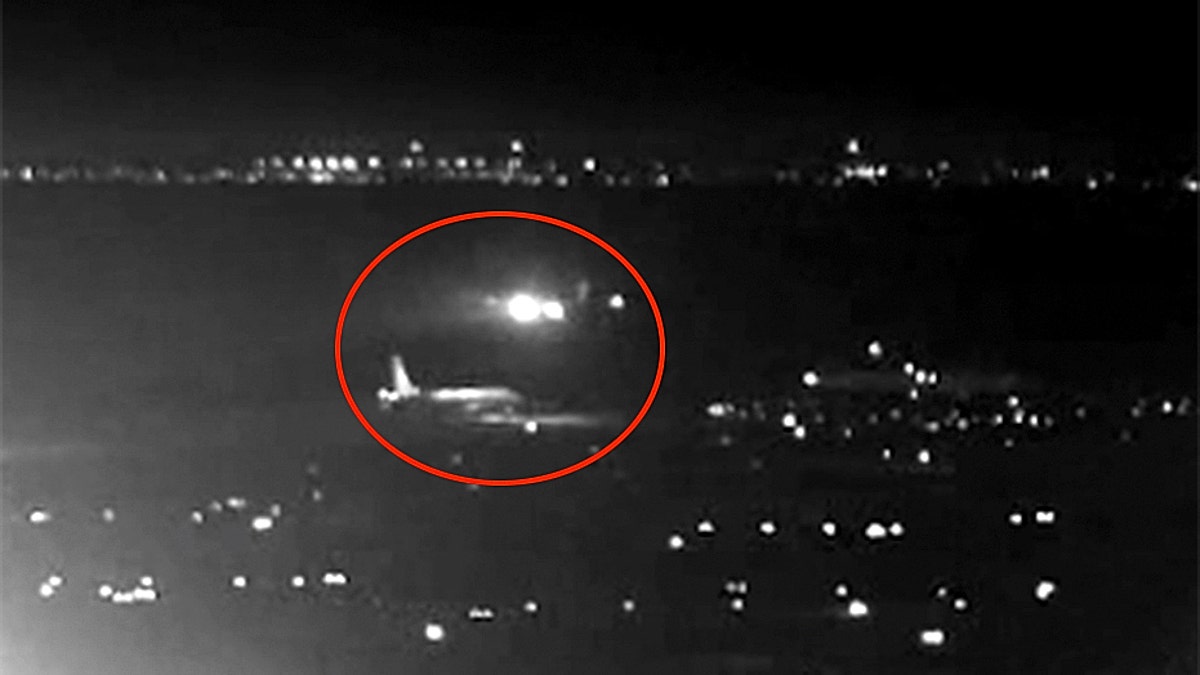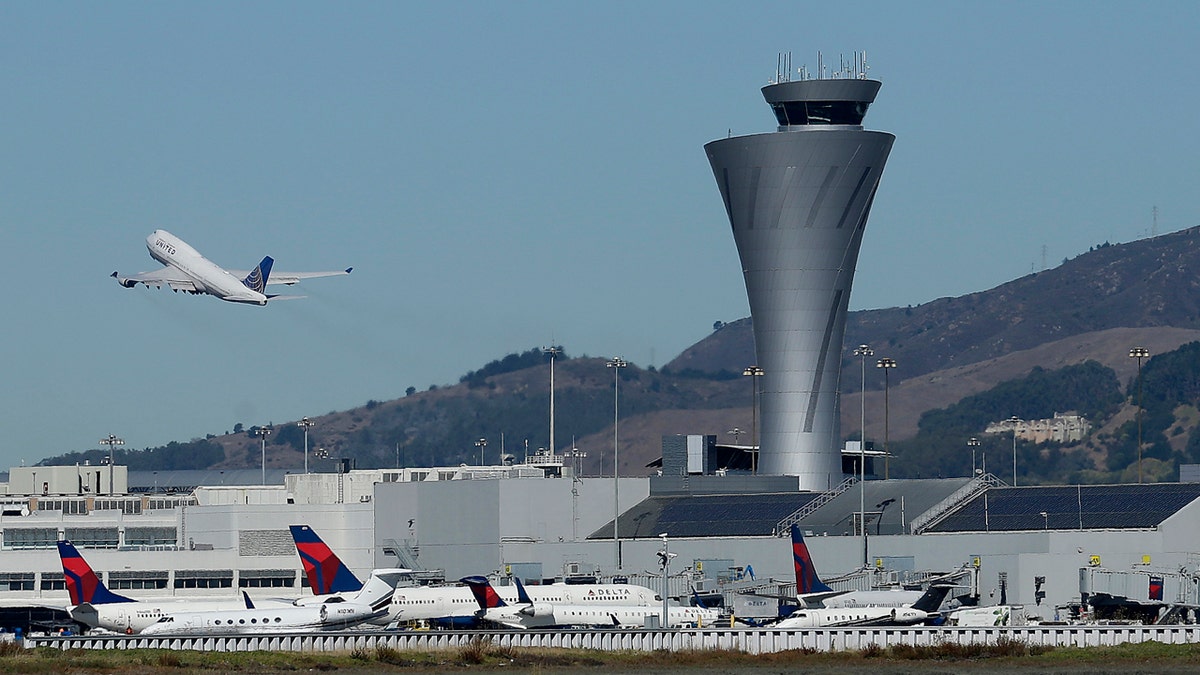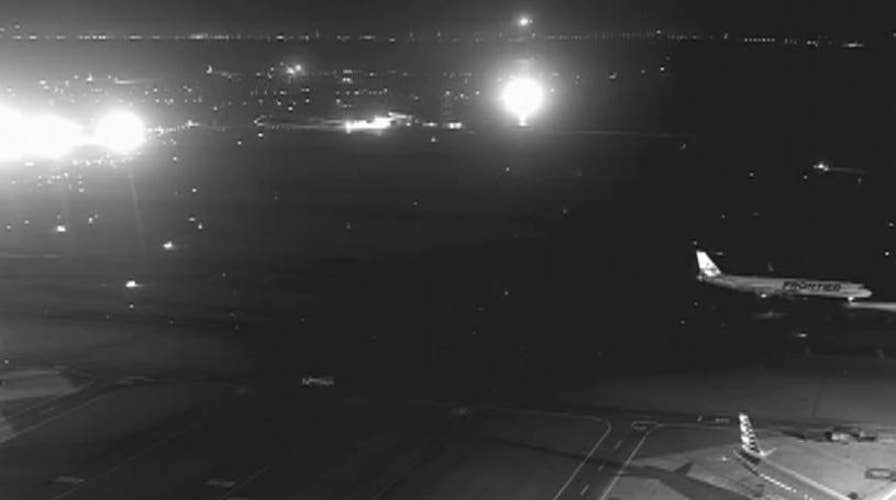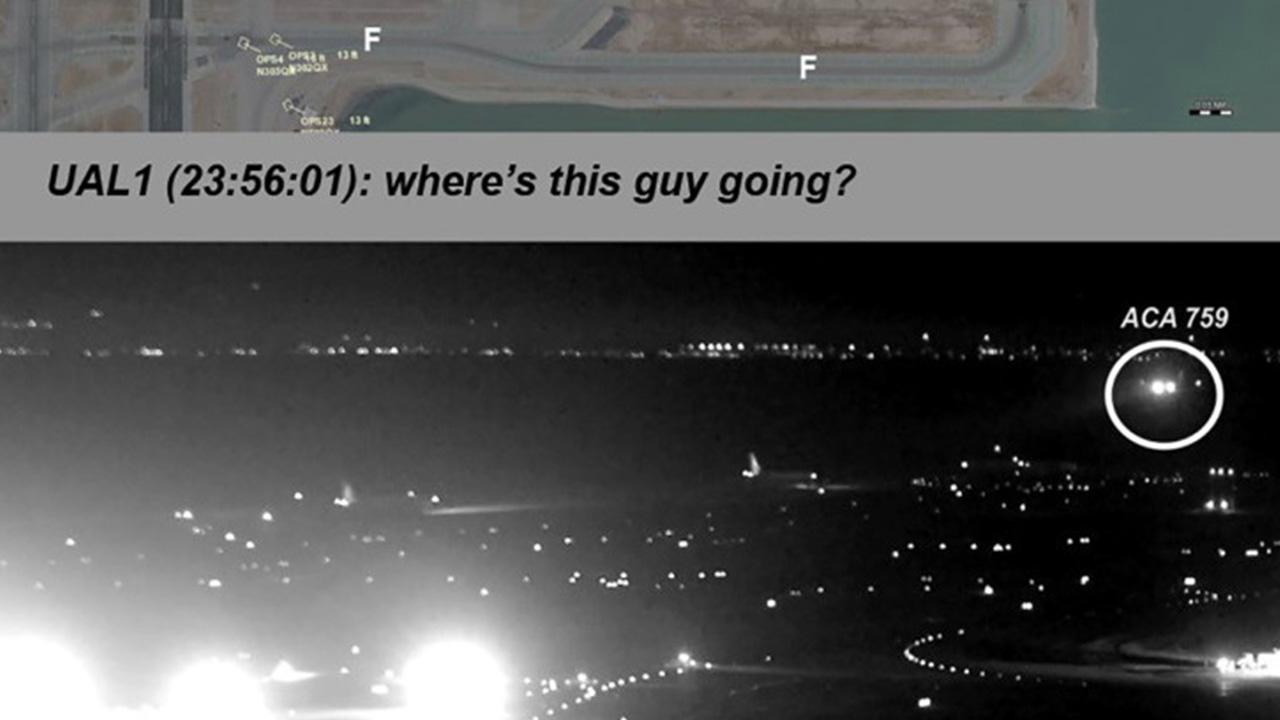Air Canada flight nearly lands on busy runway
NTSB video shows the close call an Air Canada flight had when it almost landed on a runway filled with jets at San Francisco International Airport.
New video released Wednesday by the National Transportation Safety Board shows how close an Air Canada flight came to a taxiway full of planes at San Francisco International Airport last year before pulling away.
The video from an airport surveillance camera shows the moments Air Canada Flight 759, an Airbus A320 aircraft with 140 people aboard, lined up to land on what the pilot believed to be runway 28-Right just before midnight.
WOMAN CLAIMS AMERICAN AIRLINES REP THREATENED HER IN VULGAR TEXT MESSAGE
Pilot Dimitrios Kisses was actually headed towards a taxiway jammed with four planes. Kisses told investigators he aborted the landing on July 7, 2017, because "things were not adding up," the NTSB said. Moments later, an air traffic controller told him to pull up.

An Air Canada plane can be seen flying just above a United Airlines flight waiting on the taxiway. (NTSB)
The plane came within 59 feet — about the height of a passenger plane — before it pulled up to attempt another landing. In the video, the Air Canada aircraft's landing lights can be seen illuminating one of the four planes on the taxiway below, demonstrating how close the incident came to becoming a major aviation disaster.
The pilot and co-pilot reported being tired after flying from Toronto, according to the NTSB report.
"At some point but could not recall when, the captain asked if he could confirm the runway was clear, he looked up and he expected to see the runway; however, when he looked up he could not understand what he was looking at," First Officer Matthew Dampier told the NTSB.
AIR CANADA PLANE DROPPED OFF RADAR BEFORE ALMOST CAUSING MAJOR AVIATION DISASTER
Dampier added that when he got together with Kisses the next day to discuss what happened, they were "shocked" to find out how low they were.

In this Oct. 24, 2017, file photo, the air traffic control tower is in sight as a plane takes off from San Francisco International Airport in San Francisco. (AP Photo/Jeff Chiu)
"They thought they were at 400 feet when they initiated the go around," the NTSB said. "However, since then they realized that it was lower than that. He was shocked at how low they were."
The report also said that Dampier twice failed to earn a promotion to captain after getting unsatisfactory reviews during the process. Instructors said he made imprecise approaches before landings and seemed to lack understanding of situations and surroundings.
AGENCY: PILOTS CAUSED 3 SAN FRANCISCO AIRPORT CLOSE-CALLS
A call by the Associated Press seeking comment from The Air Canada Pilots Association, the union that represents the airlines' pilots, was not returned.
The NTSB said an investigation is still underway into the July 2017 incident, but released a large docket of reports in addition to the video that contained records of communication between air traffic control and other flights that evening.
The crew of the first aircraft that was waiting on the taxiway, a United Airlines Boeing 787, could be heard in recordings of the incident commenting, "Where's this guy going?"
Air traffic controller Brian Delucchi told investigators that the flight path of the plane looked "extremely strange" before he ordered the crew to abort its landing and circle the airport for another attempt.
He was the only one working that night, and the agency later issued new rules requiring two controllers in the airport tower during busy late-night periods.
Delucchi said the plane dropped from his radar screen on approach, an unusual occurrence that he said didn't alarm him because he was tracking the plane with binoculars.
Federal officials subsequently issued new rules for nighttime landings and control-tower staffing at the airport. Now, when an adjacent runway is shut down at night, air traffic controllers will no longer let pilots make so-called visual approaches to land. Instead, they must use instrument landing systems or satellite-based systems to line up for the correct runway.
The Associated Press contributed to this report.


